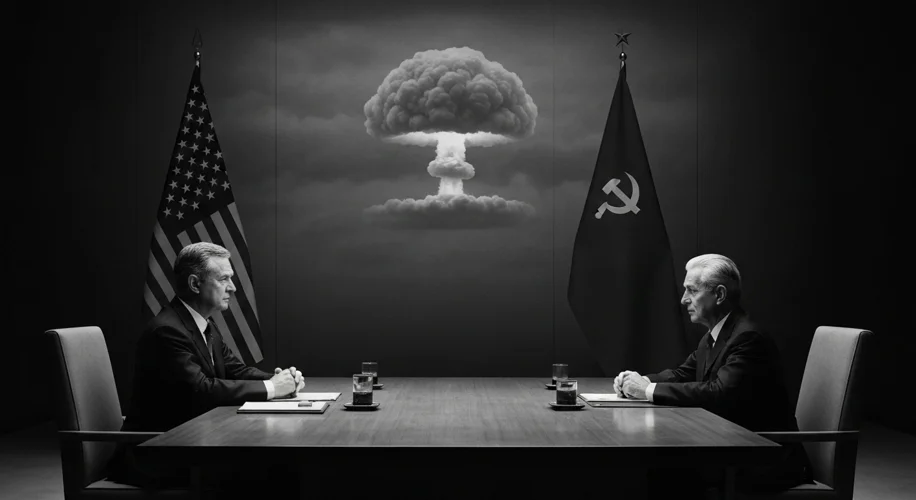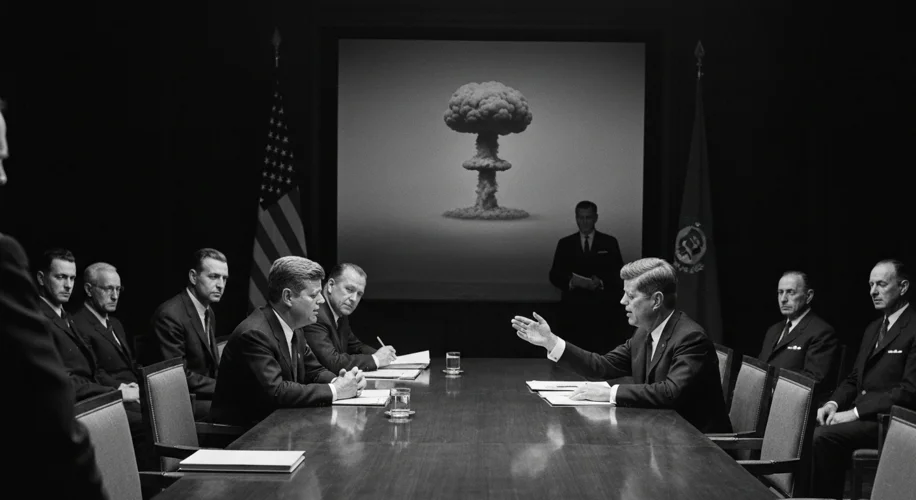The year is 2025, and the world collectively holds its breath. In the hushed corridors of power, the specter of nuclear annihilation, a fear that once defined the Cold War, continues to cast a long, chilling shadow over international relations. It’s a shadow woven from the threads of history, a narrative of brinkmanship, existential dread, and the terrifying logic of mutually assured destruction.
From the moment the mushroom cloud bloomed over Hiroshima and Nagasaki in August 1945, the world was irrevocably changed. The sheer destructive power unleashed marked not just the end of a global war, but the terrifying dawn of a new era, one where humanity possessed the means to extinguish itself. This newfound capability fundamentally reshaped geopolitical strategy, ushering in a period of intense ideological struggle between the United States and the Soviet Union – the Cold War.

The early years of the nuclear age were characterized by a palpable sense of fear. The development of intercontinental ballistic missiles (ICBMs) meant that nuclear war could strike with little to no warning. This spurred an arms race, a desperate, escalating competition to build bigger and more devastating arsenals. Leaders on both sides engaged in a dangerous game of chess, where a single misstep could have unimaginable consequences. The rhetoric was often stark, laced with thinly veiled threats. Phrases like “massive retaliation” and “escalate to de-escalate” became part of the diplomatic lexicon, chilling reminders of the stakes involved.
Consider the Cuban Missile Crisis of 1962. For thirteen harrowing days, the world teetered on the precipice of nuclear war. The discovery of Soviet missile bases in Cuba, just ninety miles from Florida, brought the two superpowers closer to direct conflict than ever before. President John F. Kennedy and Premier Nikita Khrushchev engaged in a tense standoff, with the fate of millions hanging in the balance. Kennedy’s naval blockade of Cuba and Khrushchev’s eventual agreement to remove the missiles, under intense pressure and behind-the-scenes negotiations, averted disaster. This event served as a stark, visceral lesson in the dangers of nuclear brinkmanship.

The threat of nuclear weapons wasn’t confined to direct confrontation between the superpowers. Nuclear proliferation became a significant concern. As more nations acquired nuclear capabilities, the potential for regional conflicts to escalate into global nuclear exchanges increased. The doctrine of Mutually Assured Destruction (MAD) – the idea that a nuclear attack by one superpower would be met with an equally devastating counterattack, resulting in the annihilation of both – became the grim guarantor of peace, albeit a peace held together by the most fragile of threads.
Throughout the latter half of the 20th century and into the 21st, nuclear rhetoric has ebbed and flowed with the tides of international tension. From the sabre-rattling during the Korean War to the anxieties surrounding nuclear tests by nations like North Korea in more recent times, the underlying threat remains. The language of diplomacy, while often couched in terms of deterrence and stability, can easily shift, fueled by political ambition, perceived threats, or miscalculations.
Even today, in 2025, as new geopolitical challenges emerge, the shadow of the mushroom cloud persists. The complex web of alliances, the development of new weapon systems, and the ever-present possibility of cyber warfare targeting nuclear command and control systems all contribute to a precarious global security environment. The lessons of history are clear: the rhetoric of nuclear threat is a double-edged sword, capable of deterring aggression but also of leading humanity down a path from which there may be no return.
Understanding this historical context is not merely an academic exercise; it is essential for navigating the present and shaping a future free from the existential dread that has haunted humanity for decades. The ultimate goal remains a world where the ultimate weapon is relegated to the darkest chapters of history, not a lingering threat in the headlines.

